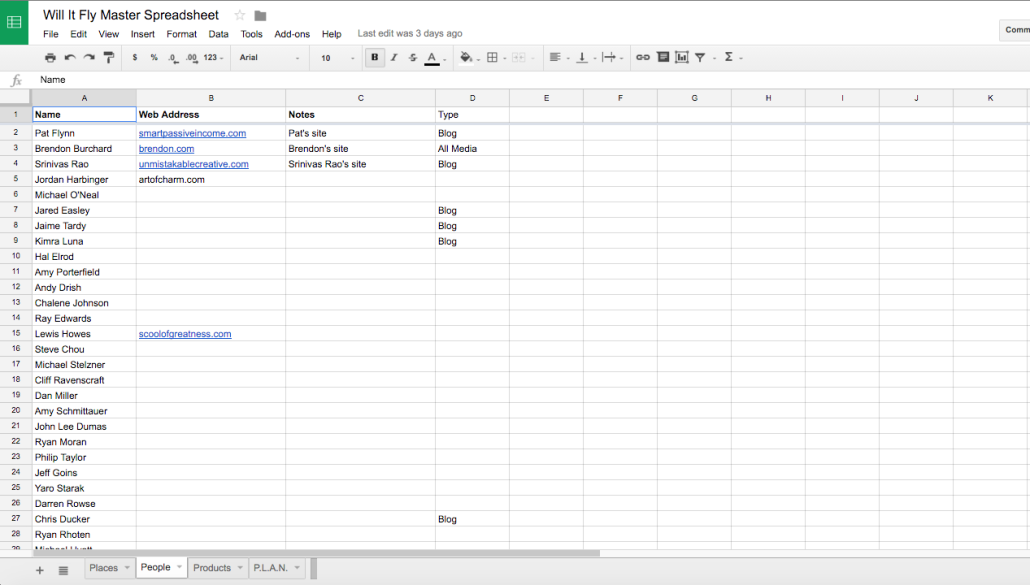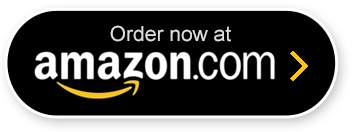Pat Flynn’s Beginner’s Guide: Will It Fly Book Summary
Before we get started, I just wanted to say how useful this book has been. I wanted to give it a little bit more justice than what I’ve seen from other reviews. It’s my goal for you, the reader, to get some value from what I got out of the book as well as get an interest in reading it yourself. I hope that this review helps you make that decision! – JC
How does the business idea you have in your head right now fit into your future self, if at all?
The Riches are in the Niches
Products and services we create as entrepreneurs are like elixirs.
Will It Fly? In One Sentence: The true Entrepreneur knows their superpowers, knows more about their client’s pains more than they do, & is not afraid to help. (Click to Tweet)
The Big Ideas:
- Start with Where You Want to Go
- Know the Kind of Work You Like
- Know Your Strengths
- Get an Idea of What Your Basic Business Idea Will Look Like
- Market Research: Who’s already doing something similar? (Places, People, Products)
- Getting into the Head of Your Potential Clients, Customers, and Audience (Customer P.L.A.N.)
- Validation of Your Elixirs
- Case Studies
Start with Where You Want to Go
Entrepreneurs are notorious for “idea churn” – starting something new, only to abandon it for another idea. Sometimes this churn is fast, and sometimes it’s slow, but our goal here is to reduce the chances of churn happening at all.
One thing I learned in engineering that goes hand in hand with many of the success books that are out there is this simple phrase “Start with the End in Mind”.
Starting a business is no different. You need to have a valid idea of what that looks like. Ask yourself: If I had a successful business, what kind of lifestyle would it afford me? Would you be working it all the time from your computer in your home office (once in awhile on a beach?) or would you be traveling around the country or world, giving speeches? Would you be working one on one with your clients? Or, maybe, just maybe, you’d be in a third world country helping kids and their families build better lives?
Pat Flynn has done all of these things at one point in his business. As an architect, he knows what it’s like to think what the end of his project is going to look like. He then works his way backward from that goal and divides his work up into the pieces that need to be done. Same with an engineer. If weren’t trained that way, many things that we take for granted today would not exist.
In this session, Pat helps us determine what we really want in the future in 4 categories that he helps us choose.
Know The Kind of Work You Like
By creating a chronological roadmap of your past work experience, you’ll be able to discover some very interesting patterns about who you are and what works best for you.
I personally think this goes without saying. If you want be a recognized thought leader, car mechanic, or even a landscape architect, you’re going to need to love doing it. Doesn’t matter whether or not you are an entrepreneur or not – Everyone needs to figure out what kind of work they like to do.
When I first rebooted New Inceptions a year ago, I wasn’t quite sure what I wanted to focus on. I simply wanted to help millennials get better at life. However, as time moved on, I realized what part of life and what kind of life I wanted to help, not only millennials, but all kinds of people with – doing work that matters to do them that gives them a lifestyle that they want. Most often than not, this is usually working for yourself. Only through your own business can you get the best things from life, and frankly, I ask – why limit yourself to a job when you might have so much more potential than that?
In this section of the book, Pat talks about listing past jobs you’ve had. He helps us list what you like about them, even what you don’t like about them – and give them an overall rating in how well they match you as a person. You’ll be using those experiences to craft a business based on activities you naturally do.
Know Your Strengths
It doesn’t matter whether or not you plan on becoming a public face to your company, we have to learn what it is about you that you will bring and incorporate into your future business.
This is typically where I tend to start with coaching clients of mine in the past. Pat starts with where you’re going, I start with who you are. Both are equally as important.
Why?
Well, imagine that you’re trying to get to someone’s house in your car and you get lost because for whatever reason, the GPS can’t seem to match their address with their actual location. Believe me, it happens. So you call them and say “Hey, how do I get where you’re at? My GPS isn’t working right.”
What do you think is going to be their response?
“Where are you?” “I’m on Lost Avenue. Hold on, let me find out.” and you proceed to talk until you navigate to where you need to get to.
In business, just like in life, we need to know who we are. What our strengths are, or as Pat puts it, our Superpowers.
In the book, Pat has us do an exercise to find out from others what our Superpowers are. However, there are a few books that I’ve mentioned in the past that will help you find out even more about your strengths if you don’t want to learn about your strengths from the people you’ll be asking. Those books are StrengthFinder 2.0 and StandOut. (Make sure you get new copies as they will come with a 1 time use code that you’ll need to use for your assessment.)
However, I will say that you should still do this exercise because it’s good to know how others see you and perhaps why they see you that way.
Get an Idea of What Your Basic Business Idea Will Look Like
I’ve been using mind maps ever since I started my own business. I created one to start my first online product, and then later I started to incorporate mind maps into everything else that I did.
Mind maps are essential to doing anything creatively in my book. Whether you use post it notes like Pat does, or use an application (I use MindNode for Mac), they’re very important in getting your idea together for things you want to create. Much better than lists, in my opinion!
That said, Pat suggests that you work in two ways when you’re making your mind map. The Creative phase – where you’re just brainstorming related subjects. And then the second phase where you play the editor. The editor collects, adds context, and prunes out extra to get things all sorted out.
If you’re unfamiliar with mind maps, Pat has made a great video for you to check out in how he uses them to make books here:
Market Research: Who’s already doing something similar? (Places, People, Products)
If you find that others have already done what you’re planning to do, that’s a great thing! Someone else has already done the heavy lifting for you. They’ve taken the time and have spent the money to serve the audience, or attempt to do so, and by following their lead you can determine what’s working and what’s not, and adjust your business accordingly.
Very simply idea. If there’s already people doing what you’re going to do, that’s actually a good thing. It means that you’re not having to recreate the wheel and build an audience for it. Remember, being creative isn’t about being original, it’s about doing things in a way that has your uniqueness stamped on it.
As you find websites, people, and products that are already in your niche, list them in a spread sheet. In the book, Pat mentions a ton of ways to find resources that might otherwise take several weeks, months, or years to naturally bump into.
Eventually you’ll end up with a spread sheet that looks similar to mine:

Yeah, I know it’s not all filled out! If you’re in my niche, let me know. I’ll share it with you and we can work on it together!
More Market Research: Getting into the Head of Your Potential Clients, Customers, and Audience (Customer P.L.A.N.)
When you serve you get paid back in return, but only if you give those you serve a way to pay you back in some way, shape, or form.
Problems:
If you don’t know your target customers problems, how can you ever help them with a solution? You can guess what they are, which might not be the best idea – especially if you’re product is going to cost a lot of time or money to produce! Or you can learn how to ask important questions. (This is where my time in The Foundation has really paid off!)
Essentially you want to get to know their pains so well that when you ask them later, they assume that you already have a product. This is typically done through one on one contact with your target clients, as well as through surveys and, if you don’t know how to get in touch with your target customers, you can use paid traffic to get them to surveys.
Language:
We have a feeling of what kind of problems are out there, but how are the masses describing it? Now it’s time to use Google to search forums and other websites to check for questions that come up again and again. He also uses Google to check related searches to a topic. Ideally going for Questions, Keywords, and Complaints that people have in regards to the problem.
Anecdotes:
Nothing beats a good story! Especially when you’re going to be using said stories to help get your messages to your audience in a better fashion. Not only putting yourself in their seat, but also using these stories later when you’re offering a solution. Again, forums are a great place to search for these stories – but so are interview based podcasts! One of Pat’s most relatable interviews was with Shane and Jocelyn Sams. Check out that conversation here and tell me that that conversation doesn’t make you think you can build a functional online business! (Also, just an FYI on where Shane and Jocelyn are currently at – they’ve recently started a site here.)
Needs:
After going through P, L, and A – here’s N. Fairly simple step. What has the other 3 parts told you about your target customer? What do they really need? Do they need information updated from older websites? Do they need you to get them specifically what they want from all the material that’s out there on the web? Perhaps they have a specific vehicle that you can tell them if they can fix it on their own or not (yeah, that one is a little too descriptive. But it’s an idea for a mechanic wanting to go online!) It’s up to you to figure out what possible solutions might be.
Elixirs:
…the products and services we create as entrepreneurs are like elixirs – remedies or cures for certain “diseases” that are plaguing our target market.
For each need, you might think of one or a couple of ways to fix that issue.
However, you can only focus on one solution at a time. So pick one, sit on it for a day, and think about it.
After that day, Pat suggests to make another mind map about that new idea for a solution.
Personally, I say, if it fits within your original business idea – that’s great! Your business can be a theme of products. Not a problem there – many businesses have that model. However, you want to start with one main project.
Validation of Your Elixirs
…validation is not based on someone telling you they would buy, like, read, consume, watch, or listen to something you create. Validation is based on certain actions they take.
Essentially that validation is whether or not they want it so bad that they purchase it before it’s even made. Think Kickstarter.
For this process to occur, you need to do 4 things:
- Get in front of an audience.
- Hyper-target (Make them self identify that they’re interested.)
- Interact and share your solution.
- Ask for the transaction.
There are a ton of points that I’m skipping here that Pat makes in the book about how to go about actually doing this. He talks about strategies in how to do all of these.
Personally I call this a typical launch sequence. So if you’ve been in any webinar, or are going to be in one soon, see if they’re doing these steps.
Case Studies
In each of the case studies below, which range between all different kids of businesses across all different markets, you’ll get a breakdown of how each person moved forward during each phase of the process.
In this particular section, Pat gives an account of several people in his network (Joey Korenman, Bryan Harris, Jennifer Barcelos, Jarrod Robinson, and Noah Kagan) that went through the validation process.
To me, this part right here makes the entire book. However, you have to read the entire book for these to have the effect that they should when you get here.
Closing Thoughts
As we close out my first book summary, I want to say thank you for checking it out. I hope it helps you in a little way in getting your business started. If you’d like to know more, of course order the book (Amazon link). However, you should order the book just so you have a “quick” reference in what you should be doing next if you are already an entrepreneur.
Also, if you’d like me to do future summaries of other books in the future, let me know in the comments below. I did this one partly because I was part of Pat’s launch team and never fully did a “review”. I hope that this provides more value than what I’ve seen around the web constitute as “a review”.
That said, I’d love to do more “summaries” if you’d like of other books and products if you’d think that would add some value.
Also, on a side note – I’m actually very proud of Pat for writing this. You can tell he put a ton of work into it. I think it will continue to get his name out there for years to come. Not only that, but it will validate what many of us new solopreneurs have to put up on a regular basis.
Thanks, Pat, for leading the way!
Action Steps (Didn’t think I’d leave this out, did you?)
Go buy the book. It’s right up there with Rich Dad, Poor Dad. You can get it for free with Audible as a audio version if you need to!






Leave a Reply
Want to join the discussion?Feel free to contribute!